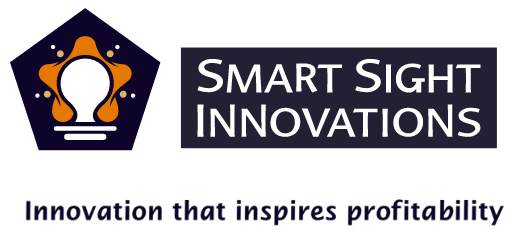 Organizations across all sectors are being pushed to prepare for infrastructural improvements by expanding operations. With the emergence of digital trends and the subsequent growth of application-specific business transformation, this situation began to experience new heights.
Organizations across all sectors are being pushed to prepare for infrastructural improvements by expanding operations. With the emergence of digital trends and the subsequent growth of application-specific business transformation, this situation began to experience new heights.
Timely product delivery and consistent feature additions and updates are essential for uninterrupted operations. Containerization technology offers a simple route to success in the application delivery cycle. Enterprises choose cloud containerization over alternative technologies because of the advantages of containerization.
What Is Containerization?
Containerization combines an application’s components into a single container image and executes it in separate user spaces on the same common operating system. Containers are easily transportable, light and highly automated.
Containerization has established itself as a fundamental component of application infrastructure for a range of use cases. Firms can modernize and scale their technology stacks by understanding containerization and knowing how to do it securely.
Containers run on a layer that is abstracted from the host operating system underneath. They are separated and have access to system resources that are strictly limited, just as virtual machines (VMs). No virtual hardware, virtual kernel or virtual operating system resources are used by containers to run programs. Therefore, virtualization with containerization is significantly more effective and lighter.
Leading Software Container Platforms
We look at some of the best containerization platforms that allow efficient packaging of software and its dependencies and provide a consistent and isolated environment for applications to run.
Docker
Docker is widely regarded as the pioneer and market leader in the field of software containerization. It provides a comprehensive platform for building, packaging, and distributing containers. Docker’s strength lies in its simplicity and ease of use, making it accessible to both developers and system administrators.
Key features:
- Docker allows developers to encapsulate applications and their dependencies into lightweight containers, ensuring consistency and portability across different environments.
- It provides an extensive library of pre-built containers, known as Docker images, which can be easily deployed and shared.
- Docker facilitates efficient resource utilization through its container orchestration tool called Docker Swarm, enabling the management of a cluster of Docker nodes.
- It offers seamless integration with various container registries, such as Docker Hub, enabling easy distribution and collaboration of containerized applications.
Kubernetes
Kubernetes, often abbreviated as K8s, is an open-source container orchestration platform originally developed by Google. It has emerged as the de facto standard for managing containerized applications at scale. Kubernetes provides advanced capabilities for automating the deployment, scaling, and management of containers across a cluster of machines.
Key features:
- Kubernetes offers a highly resilient and scalable architecture, allowing organizations to handle large-scale deployments with ease.
- It supports automatic scaling based on resource usage, ensuring optimal utilization of computing resources.
- Kubernetes provides advanced load balancing and service discovery mechanisms, enabling seamless traffic routing and distribution across containers.
- It offers declarative configuration management, allowing developers to define the desired state of their applications and leave the platform to handle the actual implementation.
- Kubernetes supports self-healing capabilities, automatically restarting failed containers or replacing them with healthy replicas.
Red Hat OpenShift
Red Hat OpenShift is a popular enterprise-grade container platform built on top of Kubernetes. It provides a complete container ecosystem, offering additional features and tools for organizations looking to build, deploy, and manage containerized applications at scale.
Key features:
- OpenShift provides an easy-to-use web-based console for managing applications and resources, simplifying the management of Kubernetes clusters.
- It includes built-in developer tools and workflows, facilitating the continuous integration and deployment (CI/CD) process.
- OpenShift offers a wide range of security features, including role-based access control (RBAC), image scanning, and network policies, ensuring the security and compliance of containerized applications.
- It provides multi-tenancy capabilities, allowing organizations to create isolated environments for different teams or projects within a single OpenShift cluster.
- OpenShift integrates well with existing enterprise systems and offers seamless integration with Red Hat’s extensive ecosystem of products and services.
AWS Fargate
AWS Fargate is a serverless compute engine provided by Amazon Web Services (AWS) for containerized applications. It simplifies the deployment and management of containers without the need to manage the underlying infrastructure. With Fargate, developers can focus on building and scaling their applications, while AWS handles the infrastructure management.
Key features:
- Fargate eliminates the need for managing virtual machines or clusters. It abstracts away the infrastructure layer, allowing developers to focus solely on containerized applications.
- It automatically scales containers based on application demand. It adjusts the compute resources allocated to containers to ensure optimal performance and cost efficiency.
- Each container task in Fargate runs in its own isolated environment, providing enhanced security and performance isolation from other containers running on the same infrastructure.
- Fargate seamlessly integrates with other AWS services, such as Amazon Elastic Container Registry (ECR) for container image management, Amazon Elastic Load Balancing (ELB) for load balancing, and Amazon Virtual Private Cloud (VPC) for networking.
- It follows a pay-as-you-go pricing model, allowing users to pay only for the resources consumed by their containers, eliminating the need for upfront infrastructure provisioning.
Benefits of Containerization
Developers use containerization in new ways every day to address problems. Containerization can be applied in a variety of ways and each application has its advantages. The following are some of the most frequent reasons for developers to containerize:
1. Portability
By segregating the host Operating System from the application, cloud containerization enables apps to run uninterruptedly on any platform or cloud. Additionally, the OS containerization technology eliminates integration and other irregularities that might compromise an app’s functionality.
Containerized applications are incredibly portable and productive when utilized across multiple servers.
2. Efficiency
Developers can share the app layers between containers since software executing in containerized environments shares the OS kernel with the host computer. Containers naturally have less capacity than virtual computers.
Developers can run multiple containers on the same processor as one virtual machine since they have quick startup times. As a result, this boosts server efficiency and lowers related server and licensing expenses.
3. Agility
By optimizing workflows, containers allow for quick creation and deployment in any environment, fostering agility in development teams. They can be swiftly created, deployed and shut down when no longer required for a variety of functions. This is where tools like Kubernetes can help, as they give developers the ability to automate container management.
4. Faster Delivery
Due to their capacity to accelerate the application configuration and deployment procedures, developers often refer to containers as lightweight. They do not require each application to have an operating system above it.
When using containerization services, a Docker container can produce a master version of an image (the main application) that can be swiftly deployed when needed. A container environment provides greater flexibility when it comes to the immediate creation of many new containerized deployment instances of an application.
5. Improved Security
Applications that are containerized will each have a different level of security because they operate independently in individual containers. Offering extra functionality without taking any risks is possible by the isolation that containerized apps give.
If you are collaborating with a development team outside of your network, all you need to do is distribute the necessary resources outside of any sensitive data.
6. Faster App Startup
As containers are quite lightweight when compared to other virtualization techniques, it has several advantages, one of which is quick starting times. Startup times for containers are almost immediate because they don’t require a hypervisor or virtualized operating system to access computational resources. Frequent upgrades and changes are highly recommended because of rapid starting.
7. Easier Management
Application management, automated installation, scaling and management of containerization workloads are handled by container orchestration technologies. You may manage logging, debugging, version upgrades and other tasks associated with containerized apps using containerization services. Kubernetes is one of the most popular containerization tools.
8. Growth
Containerized applications can manage increasing workloads because they are designed as customer-focused applications. Adding more containers to the cluster of dispersed machines or changing the existing architecture to accommodate more resources can both accomplish this.
With the use of cloud containerization, you can effortlessly add new features, functionalities and updates without impacting the original program. Thus, a resource-effective application containerization is achievable with container technology.
9. High Productivity
The ability of containerization technology to support a rapid development environment and produce more applications is well determined. Because portable apps rely on the platform’s source code to function, cloud containerization helps developers be more productive by enabling them to track and modify platform changes.
When installing apps on various cloud containerization platforms, they simplify and save time by minimizing their dependence on the primary server or OS resources.
10. Consistency
Since each container runs independently, the failure of one won’t affect the operation of the others. Without affecting other containers, developers will have the freedom to fix issues in the detected container. Containers guarantee consistency in operations as a result.













